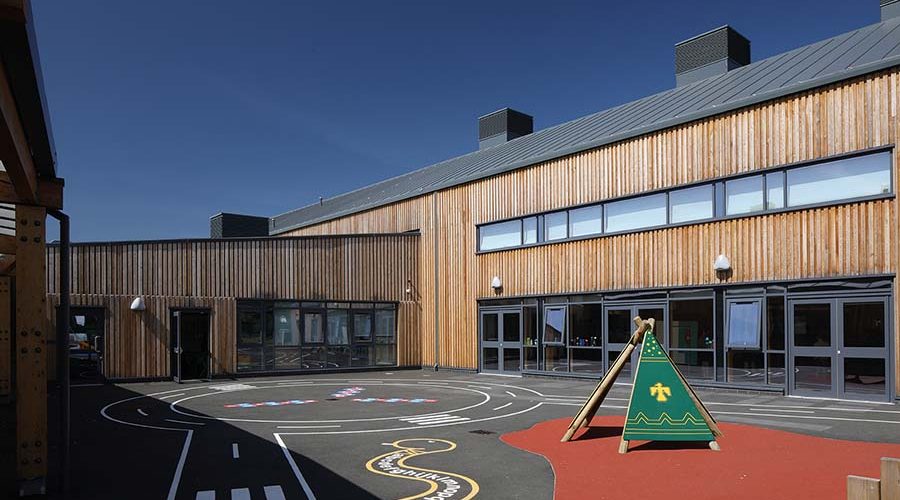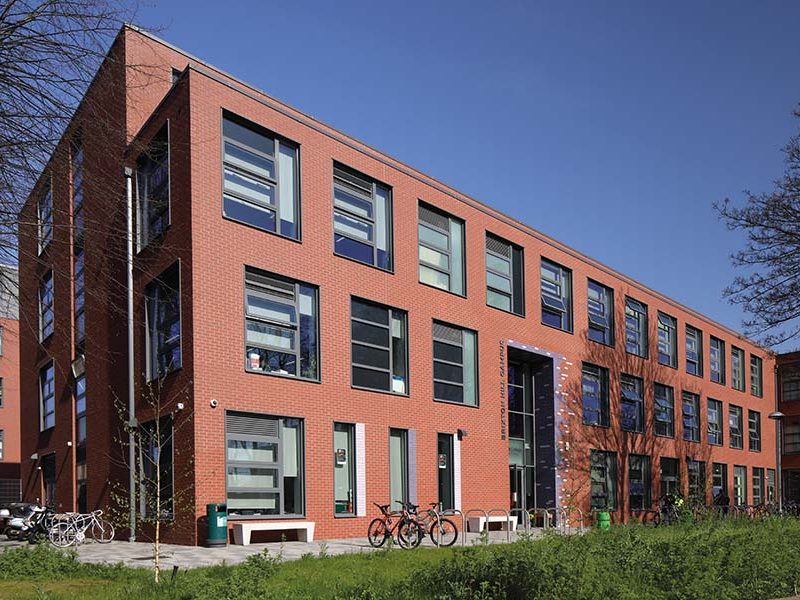At a time when schoolchildren across the world routinely take to the streets to raise awareness of the global climate change crisis, the need to reduce the environmental impact of educational facilities has never been more relevant. Andrew Cooper, National Specification Manager from leading aluminium fenestration supplier Senior Architectural Systems, discusses how taking a more efficient approach to the specification process can make savings in more ways than one.
Senior Architectural Systems
When it comes to the construction industry, the costs incurred are not just financial. The amount of resources consumed and carbon emissions generated in the construction, operation and possible demolition of just one building can have lasting implications for both the local and global environment. Building Regulations, energy efficiency targets and budgetary requirements all play a part in delivering sustainable projects but also present challenges to the project team. With the UK Government now pledging to reduce greenhouse gas emissions to almost zero by 2050, there’s much that needs to be done, but, fortunately, within the fenestration industry, the journey towards creating a low-carbon world has already begun.
Addressing the building envelope
Reducing the amount of energy that is lost through the building envelope is an important way of improving its efficiency and creating a more cost-effective and comfortable internal environment. In the education sector, an inefficient building can lead to expensive operational and maintenance costs which can take a big bite out of an already stretched budget and can have a direct impact on the quality of students’ learning. As all buildings have the potential to lose energy through doors and windows, the fenestration package has a direct affect on thermal efficiency as well as other vital areas such as daylighting and natural ventilation. But not all windows and systems are the same and understanding the long-term benefits, or limitations, of a chosen product is key to designing school facilities that are built to last.
Understanding U-values
When it comes to U-value ratings, less is more and the lower the figure, the more heat is retained. The U-value of a window system is dependent on a number of factors including the frame material, the type of glazing and the use of a warm edge spacer bar which provides the space and insulation between the two or three panes of glass.
Thermally-broken aluminium windows are particularly effective at achieving lower U-values and preventing heat loss. Most systems on the market use a strong polyamide as an insulator to prevent heat loss between the inner and outer frame, but it has also been possible to create a system that incorporates an even more effective thermal barrier made from expanded polyurethane foam; a material more commonly used in insulation and cladding products.
As legislation and guidelines can and often do change, it is well worth ‘future-proofing’ school buildings by specifying a window system that not only meets current targets but exceeds them.
Background checks
Reducing the amount of energy that is lost via windows and doors can make buildings easier to heat and as a result, can significantly lower fuel consumption and costs. However, it’s not just about how well a product performs and any green credentials can be easily tarnished if a significant waste and carbon has to be generated before the specified system even makes it to site. By looking at the lifecycle of a product, from its manufacture and transportation to its operation and disposal, specifiers can get a much clearer picture of how sustainable a product really is and how its use will truly impact on the overall carbon footprint of a scheme. A good benchmark is checking if a manufacturer holds an accreditation such as BRE Global’s BES 6001 standard for the responsible and sustainable sourcing of aluminium extrusions.
Design flexibility
Although energy efficiency may be a universal requirement within the education sector, any solution must also offer design flexibility. After all, education facilities come in all shapes and sizes, and many projects require specifiers to look at improving older buildings as well as delivering new-build schemes. The inherent strength of aluminium windows and doors allows them to accommodate much larger expanses of glazing within much sleeker and slimmer frames. This not only helps to maximise the amount of natural light but also creates an aesthetic that is appropriate for both old and new building types. Bespoke colours and finishes can also be created by powder coating the frames. As this is a process where waste and carbon emissions can be generated, it is always worth considering a local manufacturer who can offer this service in-house to reduce transport costs and potential risk.
The unique requirements of a school environment also influences the size, shape and positioning of windows. For example, it is vital that all window openings are both safe and secure, particularly at low levels to prevent falls or trapped fingers. Windows must also be of a significant size to provide adequate daylight penetration to reduce lighting costs but also need to be easily operated and controlled by occupants, either via automatic or manual controls, to avoid excessive solar gain.
The development of thermally-efficient aluminium window systems has provided specifiers with the additional advantage of having greater flexibility in terms of the positioning of radiators. Traditionally radiators would be installed in the coldest part of the room which would usually be along an exterior wall where cold air would enter via the windows. The use of more thermally-efficient windows removes these limitations, allowing greater freedom when planning interior layouts.
Aluminium systems that provide exceptional thermal performance and require minimal maintenance can offer a cost-effective alternative to using energy-efficient triple-glazing which, when used in a high-traffic environment such as a school, has a higher risk of breaking and would be more expensive to replace. Overall, the characteristics of aluminium window systems also make them ideally suited for use in school environments as they are robust, durable, easy to maintain and fully recyclable.









